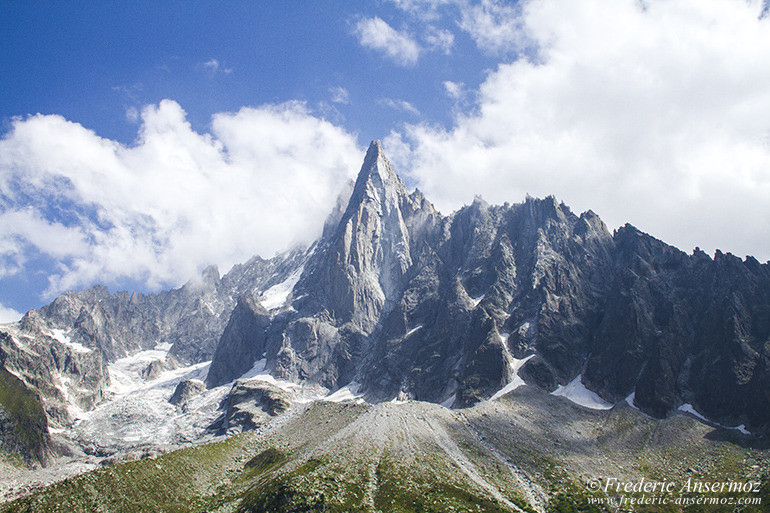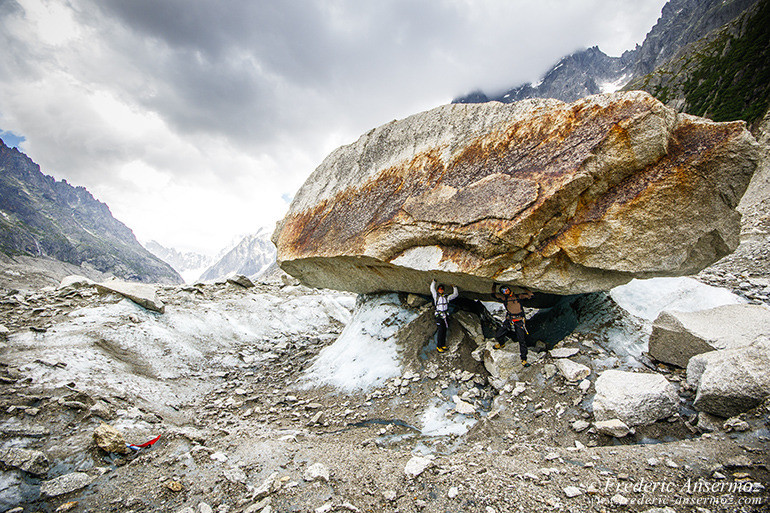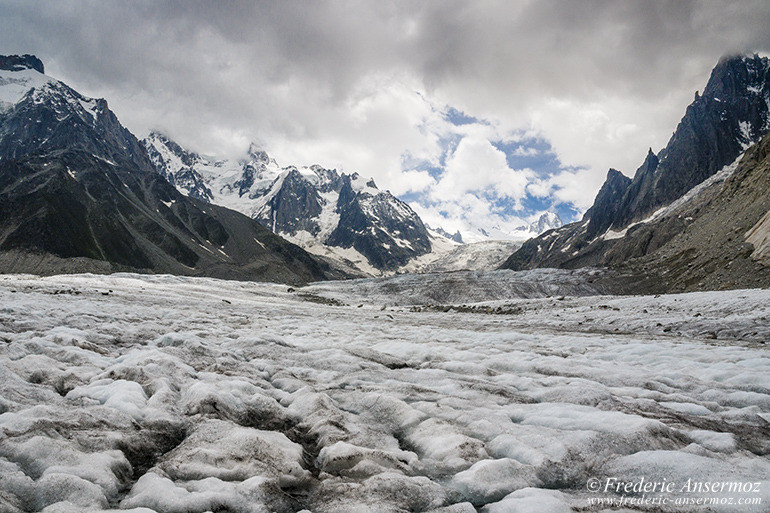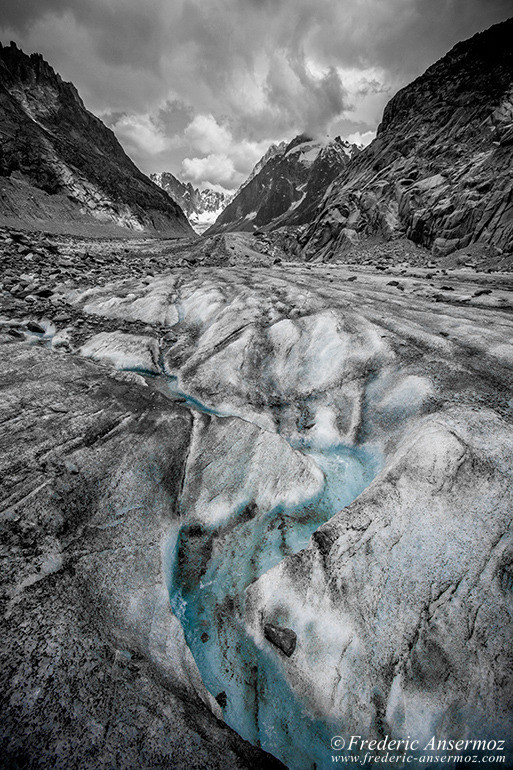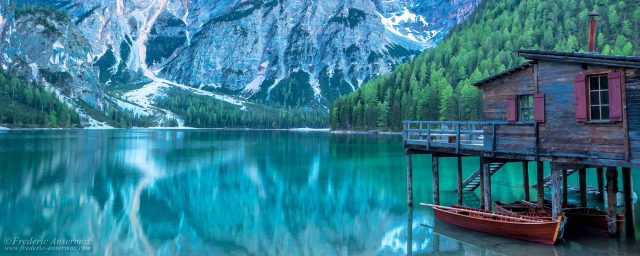The Mer de Glace (Sea of Ice) is a glacier located near Chamonix, on the northern slopes of the Mont Blanc massif, in the French Alps. It is the longest glacier in France, with 7km long and 200m deep (average).
Fed by the confluence of Glacier de Lechaud, Glacier du Tacul, and the Cascade du Talèfre, the Mer de Glace starts from an elevation of 2,140m, and descends to 1,400m, flowing between the Aiguille du Moine and the Trélaporte, and passing at the feet of the Aiguille du Dru.
The Glacier du Tacul itself, is fed by three glaciers: the Glacier du Géant, the Glacier des Périades and the Glacier d’Envers du Plan.
The Aiguille du Dru, also known as the Drus, with two peaks: Grande Aiguille du Dru (or the Grand Dru) 3,754 m, and Petite Aiguille du Dru (or the Petit Dru) 3,733 m; is a mountain that is also part of the Mont Blanc massif in the French Alps. “Aiguille” means “needle” in French.
The first ascent of the Grand Dru was accomplished in 1878.
The west face of the Drus is a 1000m high giant triangle, where massive landslides occur. 9 important ones happend between 1905 and 2011, involving more than 400 000m3 of rocks. The landslide of 2005 itself represents 75% of the volume, and includes the disappearence of the Bonatti pillar.
Global warming is the main cause, weakening the mountain structure.
Glacier walking, or hiking on ice, is to move on a glacier, alternating rocky, snowy passages, or directly on the ice.
Rope, suspender belts, helmet, crampons and ice ax are mandatory, to cross any crevasses. Safety first.
A descent, which can be dizzying, lead you to the Mer de Glace. It is done through a via ferrata with a succession of vertical ladders and metal stairs fixed in the rock.
It is also important to stay informed on weather conditions before venturing out in the mountains.
The Mer de Glace is the fourth largest glacier in the Alps, based on the surface. A cog railway, from Chamonix Mont Blanc, bring visitors in 20mn, to the upper station of the Montenvers (1913m).
Currently, the glacier loses annually about 4 to 6 meters thick and thirty meters in length. The Mer de Glace has lost 120 m in thickness between 1905 and 2005. Since 1830, it lost more than 150m in thickness and 2.5 km in length. Global warming is the main cause of the melting of the glacier.
Its effect is so visible, it highlights the importance of changing our habits that directly and negatively impact on the planet.
Also a note to say that some hikers do not leave only footprints on the ground …
I hope that you liked my pictures of the Mer de Glace, near Chamonix Mont Blanc in France, and maybe they will inspire you to come to try out glacier walking (hiking on ice), and visit this beautiful area in the heart of the Alps.
Take a stroll, take some pictures, and remember that what we do or not do, affects our planet. So please respect it :)
A big thank you to Cedric for his coaching and lending us his equipment, allowing my sister and I, to make this beautiful exploration in the mountains.














